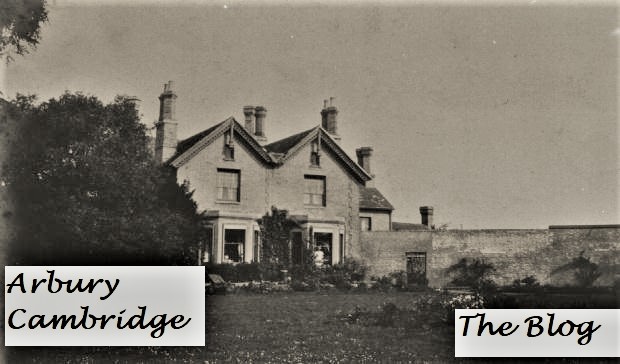The Manor Farm - Arbury Road.
Most of us with an ounce of nounce about Arbury history know that the estate had a long history of 'Manors'.
The Manor School - Arbury Road.There were at least two in Arbury Road - Manor Farm and Manor School/Community College/Academy.
And the Arbury land was once part of the Royal Manor of Chesterton, William The Conqueror having taken a fancy to it all.
Campkin Road, the Arbury Road end, was once the Manor Farm drive.
Now, there are no vestiges of the Manor link to Arbury (a bit sad as at least Hall Farm, the site of the original South Arbury, is commemorated with a road name) but that's life.
Far fewer people know that Arbury Road had a third Manor.
Manor Nurseries, a business started by Mr Ernest Sale of No 1, Manor Farm Cottages, after the First World War.
Mr Sale had been gassed in the trenches, which permanently affected his health, and had been advised to seek outdoor work.
He rented part of the Manor Farm from the County Council and set up Manor Nurseries. The business became well-known throughout Cambridge, providing floral effects for family occasions and May Balls at the colleges in the town.
In the early 1980s, the bases of the brick entrance posts to Mr Sale's nurseries were still visible in the hedgerow on Arbury Road, just up past Nicholson Way.
Manor Nurseries - Arbury RoadA kindly man, Ernest - or 'Ernie' as he was more commonly known - was remembered for his concern for animal welfare. His oft-repeated catchphrase was 'Never step over an animal,' - meaning never ignore an animal suffering ill health or distress.
Mr Sale was saddened to have to leave No 1 Manor Farm Cottages as work began on Campkin Road and North Arbury at the start of the 1960s.
He died in 1961.
Traffic now passes over the spot where his farm cottage stood, and his back garden is now part of Arbury Town Park.
Numbers 1 and 2 Manor Farm cottages and the site in 1981, with Nicholson Way, Arbury Town Park and Arbury Community Centre.




This is fascinating. So, would Manor Nurseries have been up behind where Nicholson Way is now? Presumably just South of where the entry to Arbury Road from Mere Way is now?
ReplyDeleteBack in the 1980s, two Arbury Archivers found the Manor Nurseries entrance post bases in the hedgerow on Arbury Road. If you want to try, take Mere Way as the centre, go to the hedgerow opposite, and tap around with a brolly or walking stick. The Nurseries were in the Manor Farm's Arbury Field, now Nicholson Way, etc. We're going to try and find them again when time allows, and photograph them if they are still intact - so if you see somebody tapping around with a walking stick by the hedgerow opposite Mere Way, do come and say hello! :) We have a picture of the Nurseries entrance somewhere and will upload it as soon as we find it. The Arbury Archive has been a work in progress since 1981 and is very large and disorganised, but we are slowly getting it sorted to share online and, hopefully, in book form.
Delete